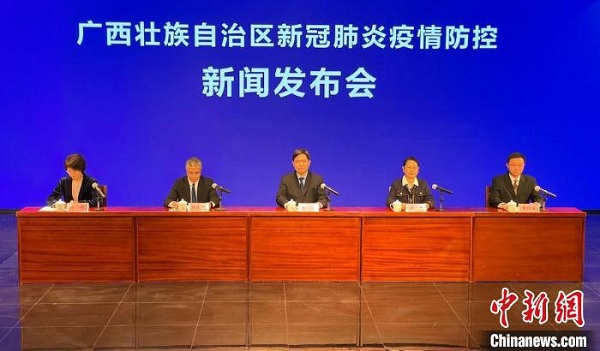Baise overcomes latest COVID-19 outbreak

The Feb 21 press conference. [Photo by Wang Weichen/China News Service]
Baise in Guangxi Zhuang autonomous region is gradually returning to normal life and production after the latest local COVID-19 pandemic outbreak, officials announced during a press conference held on Feb 21.
The city has reported no more confirmed cases since Feb 16, completely controlling the outbreak and preventing a newer pandemic wave.
Starting from Feb 21, control measures on people's traveling in or out of Debao county and Jingxi city will be eased down. The other 10 counties, cities, and districts under Baise canceled control measures on unnecessary travels outside Baise and providing negative nucleic acid test results within 48 hours for leaving Baise.
Baise used less than the COVID-19 pandemic incubation period to clear risks among the public. This procedure started on Feb 7 when the city has placed all residents under home quarantine.
In the meantime, the city set up a special working group of 2,140 members to investigate the origin of the virus for the latest outbreak. They interrogated over 20,000 people and finished over 10,000 investigation reports in one week, viewing close and second close contacts rapidly.
A total of 16,000 people from all over Guangxi headed to Baise for nucleic acid testing, making sure the massive nucleic acid testing drive could be completed in four to six hours citywide. The city's daily nucleic acid testing capacity has now been increased to 700,000.
The city allocated 1.38 billion yuan ($217.47 billion) for handling the COVID-19 pandemic. It dispatched 113 batches of medical supplies, including 2.56 million medical masks, 575,000 protective garments, and 13.1 million sampling pipes.














